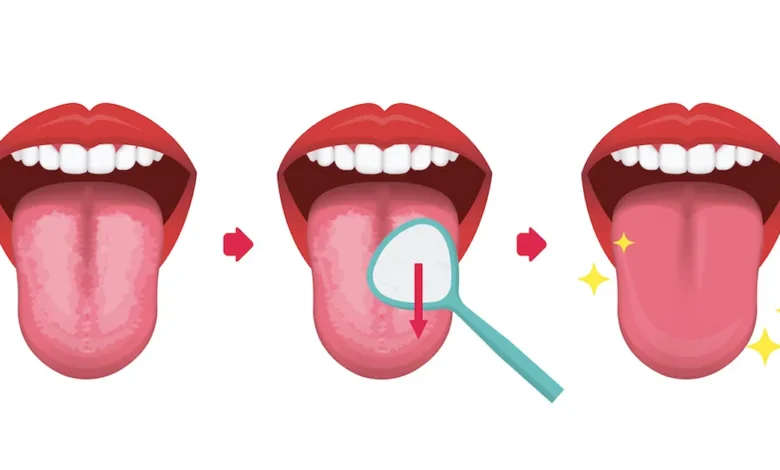
The human tongue is an extraordinary organ, one that’s constantly in action but often underappreciated. Whether it’s helping us form words, experience flavors, or swallow food, the tongue plays a vital role in our day-to-day existence. In fact, without it, many essential tasks—such as speaking, eating, and even breathing—would be significantly more challenging.
But how much do you truly know about this muscular marvel that lives inside your mouth? The tongue is a complex structure, made up of several muscles that work together to perform various functions. It’s more than just a tool for tasting your favorite foods—it’s an essential part of communication, digestion, and overall health.
Let’s dive into some fun and fascinating facts about the tongue, its anatomy, and the surprising ways it influences your life.
The Anatomy of the Tongue
At first glance, the tongue may seem like a simple organ. However, it’s made up of intricate muscle fibers and sensory cells that work in tandem to perform its many functions. The tongue is a muscular hydrostat, meaning it’s composed entirely of muscle and doesn’t have any bones or joints.
Fun Facts About the Tongue: The Powerhouse of
Here’s a breakdown of its major components:
- Muscles: The tongue is comprised of eight muscles, which are grouped into two categories: intrinsic and extrinsic muscles. The intrinsic muscles are responsible for the tongue’s shape, allowing it to change size and contour. The extrinsic muscles control the tongue’s position, helping it move in and out of the mouth and side to side.
- Papillae: The small bumps you see on the surface of the tongue are called papillae. These are tiny structures that help with gripping food and contain the taste buds responsible for sensing flavors.
- Taste Buds: A human tongue has thousands of taste buds, and each taste bud contains between 50 and 150 receptor cells. These receptors are responsible for detecting the five basic tastes: sweet, salty, sour, bitter, and umami.
- Lingual Frenulum: This is the small fold of tissue that connects the bottom of the tongue to the floor of the mouth. It helps stabilize the tongue but allows for its movement.
The Functions of the Tongue
1. Speech and Communication
One of the most critical roles the tongue plays is in speech. The tongue helps form sounds by coordinating with the lips, teeth, and palate. Different parts of the tongue come into contact with various areas inside the mouth to produce distinct sounds and phonemes, allowing for clear articulation. Without the tongue, speech would be severely limited.
2. Taste Sensation
The tongue is often most associated with tasting food. When you take a bite of your favorite dish, your taste buds spring into action, identifying the different flavors. These taste buds send signals to the brain, allowing you to experience the complex taste sensations that make eating such a pleasurable activity. The combination of taste and smell is what gives food its full flavor profile.
3. Digestion and Swallowing
The tongue plays a crucial role in the digestive process. It helps move food around the mouth, mixing it with saliva to break it down before it is swallowed. The tongue also pushes food toward the throat and into the esophagus, facilitating the swallowing process.
4. Oral Hygiene
The tongue contributes to maintaining good oral hygiene by sweeping food debris away from the teeth after eating. However, it can also harbor bacteria, so it’s essential to clean your tongue as part of your oral care routine.
5. Breathing and Airflow Control
Although not its primary function, the tongue helps manage airflow when breathing, especially when talking. It plays a role in ensuring that air passes smoothly through the throat and nasal passages.
Surprising Facts About the Tongue
1. It’s Made Up of Eight Muscles
Unlike most muscles in the body, which are connected to bones, the tongue is a muscular hydrostat made of eight interwoven muscles. These muscles give the tongue its impressive range of motion, allowing it to curl, roll, extend, and retract with ease.
2. Your Tongue is Uniquely Yours
Much like fingerprints, every person’s tongue has a unique pattern of bumps and ridges. Some biometric systems can even use tongue prints for identification.
Here’s a breakdown of its major components:
- Muscles: The tongue is comprised of eight muscles, which are grouped into two categories: intrinsic and extrinsic muscles. The intrinsic muscles are responsible for the tongue’s shape, allowing it to change size and contour. The extrinsic muscles control the tongue’s position, helping it move in and out of the mouth and side to side.
- Papillae: The small bumps you see on the surface of the tongue are called papillae. These are tiny structures that help with gripping food and contain the taste buds responsible for sensing flavors.
- Taste Buds: A human tongue has thousands of taste buds, and each taste bud contains between 50 and 150 receptor cells. These receptors are responsible for detecting the five basic tastes: sweet, salty, sour, bitter, and umami.
- Lingual Frenulum: This is the small fold of tissue that connects the bottom of the tongue to the floor of the mouth. It helps stabilize the tongue but allows for its movement.
The Functions of the Tongue
1. Speech and Communication
One of the most critical roles the tongue plays is in speech. The tongue helps form sounds by coordinating with the lips, teeth, and palate. Different parts of the tongue come into contact with various areas inside the mouth to produce distinct sounds and phonemes, allowing for clear articulation. Without the tongue, speech would be severely limited.
2. Taste Sensation
The tongue is often most associated with tasting food. When you take a bite of your favorite dish, your taste buds spring into action, identifying the different flavors. These taste buds send signals to the brain, allowing you to experience the complex taste sensations that make eating such a pleasurable activity. The combination of taste and smell is what gives food its full flavor profile.
3. Digestion and Swallowing
The tongue plays a crucial role in the digestive process. It helps move food around the mouth, mixing it with saliva to break it down before it is swallowed. The tongue also pushes food toward the throat and into the esophagus, facilitating the swallowing process.
4. Oral Hygiene
The tongue contributes to maintaining good oral hygiene by sweeping food debris away from the teeth after eating. However, it can also harbor bacteria, so it’s essential to clean your tongue as part of your oral care routine.
5. Breathing and Airflow Control
Although not its primary function, the tongue helps manage airflow when breathing, especially when talking. It plays a role in ensuring that air passes smoothly through the throat and nasal passages.
Surprising Facts About the Tongue
1. It’s Made Up of Eight Muscles
Unlike most muscles in the body, which are connected to bones, the tongue is a muscular hydrostat made of eight interwoven muscles. These muscles give the tongue its impressive range of motion, allowing it to curl, roll, extend, and retract with ease.
2. Your Tongue is Uniquely Yours
Much like fingerprints, every person’s tongue has a unique pattern of bumps and ridges. Some biometric systems can even use tongue prints for identification.
3. Taste Buds Are Not Just on Your Tongue
While most of your taste buds are concentrated on the tongue, some are located on the roof of your mouth and even in your throat. This helps expand your ability to detect a wider variety of flavors.
4. Taste Buds Have a Short Lifespan
The taste buds on your tongue are constantly regenerating. They only last about 10 to 14 days before they are replaced by new ones. However, as you age, the number of taste buds declines, which is why older adults often experience a reduction in their ability to taste.
5. The Tongue Heals Quickly
The tongue is one of the fastest-healing parts of the body. This is due to its rich blood supply, which allows for rapid regeneration of cells. So, if you’ve ever bitten your tongue or had a minor cut, you’ve probably noticed it heals faster than other injuries.
Myths About the Tongue
1. Myth: You Can Map Different Tastes to Specific Regions of the Tongue
There’s a common misconception that different areas of the tongue are responsible for sensing different tastes (e.g., sweet at the tip, bitter at the back). While certain taste buds may be more concentrated in specific regions, taste buds all over the tongue can detect all five flavors.
2. Myth: Tongues Get Longer as We Age
Some people believe that their tongues grow longer with age, but that’s not true. The size of the tongue remains relatively constant throughout a person’s life.
3. Myth: You Only Have Taste Buds on the Tongue
As mentioned earlier, taste buds are not exclusive to the tongue. They can also be found on the roof of your mouth, in the throat, and even in your esophagus.
4. Myth: The Tongue is the Strongest Muscle in the Body
While the tongue is incredibly flexible and versatile, it’s not the strongest muscle in the body. However, it is the only muscle that works without the support of bones, making it uniquely powerful in its own right.
5. Myth: Your Tongue Can Get Tired
Despite its constant use in talking, eating, and swallowing, the tongue rarely gets tired. This is because its muscles are different from skeletal muscles and are more resistant to fatigue.
Fun Tongue Tricks You Can Try
1. Rolling Your Tongue
About 65 to 80% of people can roll their tongues into a tube shape, while the rest cannot. This is often thought to be a genetic trait, but some studies suggest that it can also be learned.
2. Touching Your Nose
This trick, called the “Gorlin sign,” involves touching your nose with your tongue. Only about 10% of the population can do it. If you’re flexible enough, give it a try!
3. Folding Your Tongue
A less common trick involves folding the tongue in half or creating a cloverleaf shape. This one is even rarer, with only a small percentage of people able to master it.
The Tongue’s Role in Health
The condition of your tongue can also offer clues about your overall health. Doctors often check the tongue during physical exams because changes in its appearance can be indicative of certain health conditions.
1. White Coating
A white coating on the tongue could be a sign of oral thrush, a fungal infection, or poor oral hygiene. It can also be linked to dehydration or dry mouth.
2. Red or Swollen Tongue
An overly red or swollen tongue might indicate a vitamin deficiency, particularly of B12 or iron. It could also signal an allergic reaction or an infection.
3. Sore or Painful Tongue
Occasional soreness is usually nothing to worry about, but if your tongue is persistently painful or develops unusual sores, it’s worth getting checked by a doctor. This could be a sign of infection, injury, or even oral cancer.
FAQs
1. How many muscles are in the tongue?
The tongue is made up of eight muscles, which are divided into intrinsic (control shape) and extrinsic (control movement) muscles.
2. How many taste buds are on the tongue?
The average human tongue has around 2,000 to 10,000 taste buds. Each taste bud contains 50 to 150 taste receptor cells.
3. Does the tongue really have specific areas for different tastes?
No, the idea that different parts of the tongue are responsible for different tastes is a myth. Taste buds all over the tongue can detect all five basic tastes.
4. How often do taste buds regenerate?
Taste buds typically regenerate every 10 to 14 days, though the number of taste buds






